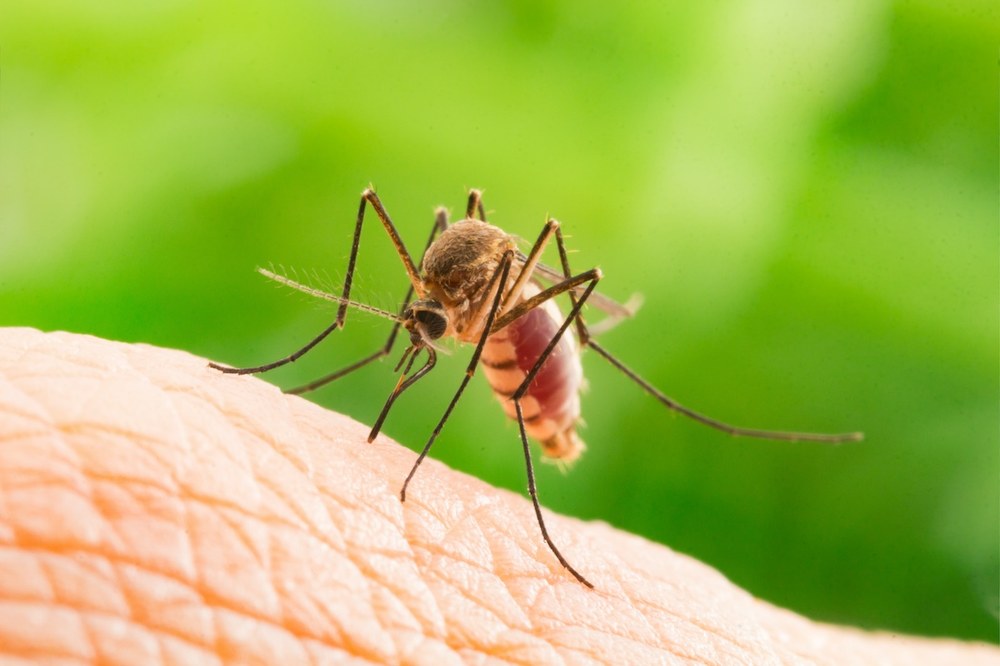CRISPR-Cas9 gene editing in mosquitos promises future control of vectorborne diseases

Image credit: Bigstock
Problem
Can vectorborne diseases such as malaria, Zika, dengue fever, yellow fever, and West Nile virus be efficiently and effectively controlled?
- A gene-editing technique called CRISPR (Clustered Regularly Interspaced Short Palindromic Repeats) provides a revolutionary way to modify an organism's genome by precisely editing a targeted region of DNA.
- Current techniques for CRISPR in arthropod vectors require difficult and inefficient embryonic microinjections to deliver the DNA-editing enzyme (Cas9) that promotes or disables certain traits.
Findings
- Entomologists designed ReMOT Control (Receptor-Mediated Ovary Transduction of Cargo) to improve CRISPR by delivering the Cas9 cargo through an easy injection into the blood of female arthropods.
- The cargo is introduced into developing eggs via receptors in the ovary.
- The researchers demonstrated the process by editing the eye color of mosquito offspring.
Impact
- ReMOT Control is a substantial improvement over existing embryo-injection techniques, putting gene-editing capability into the reach of nonspecialist laboratories and potentially revolutionizing the broad application of functional arthropod genetics. The technique drastically reduces the cost of editing genes in arthropods.
Related Research Area: Integrated Health Solutions
Research Credit
Team
- Jason Rasgon, Duverney Chaverra- Rodriguez, Vanessa Macias, Donghun Kim, Grant Hughes, Sujit Pujhari, Yasutsugu Suzuki, David Peterson, and Sage McKeand
Participating Departments
Competitive Funding
- NIH National Institute of Allergy and Infectious Diseases; National Science Foundation; Pennsylvania Department of Health using Tobacco Settlement Funds
Federal and State Appropriations
- USDA NIFA Hatch Project PEN04608, Accession #1010032
Emerging Discoveries
New technology improves CRISPR-Cas9 gene editing in mosquitoes, other species
Published Research
Targeted delivery of CRISPR-Cas9 ribonucleoprotein into arthropod ovaries for heritable germline gene editing.
-
Chaverra-Rodriguez, D., Macias, V. M., Hughes, G. L., Pujhari, S., Suzuki, Y., Peterson, D. R., Kim, D., McKeand, S., & Rasgon, J. L. (2018). Targeted delivery of CRISPR-Cas9 ribonucleoprotein into arthropod ovaries for heritable germline gene editing. Nature communications>, 9(1), [3008]. https://doi.org/10.1038/s41467-018-05425-9
Intellectual Property Profile
- Rapid, Simple Germline-Stable Gene Editing (ID# 2017-4582)
Emerging Discovery
Office for Research and Graduate Education
Address
217 Agricultural Administration BuildingUniversity Park, PA 16802-2600
- Email agresearch@psu.edu
- Office 814-865-3136
Emerging Discovery
Office for Research and Graduate Education
Address
217 Agricultural Administration BuildingUniversity Park, PA 16802-2600
- Email agresearch@psu.edu
- Office 814-865-3136




